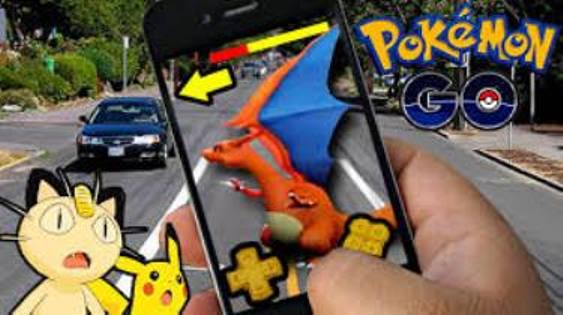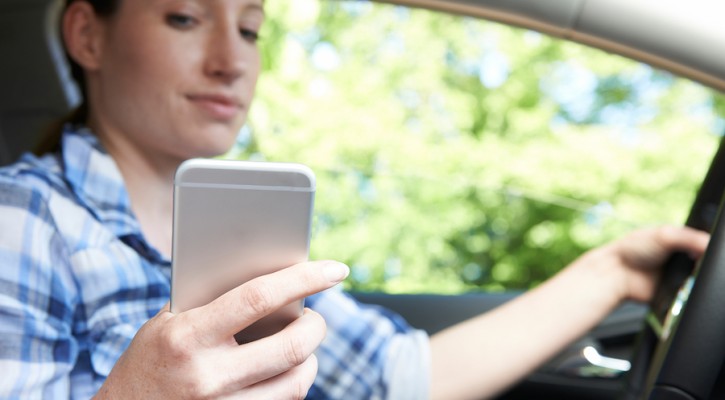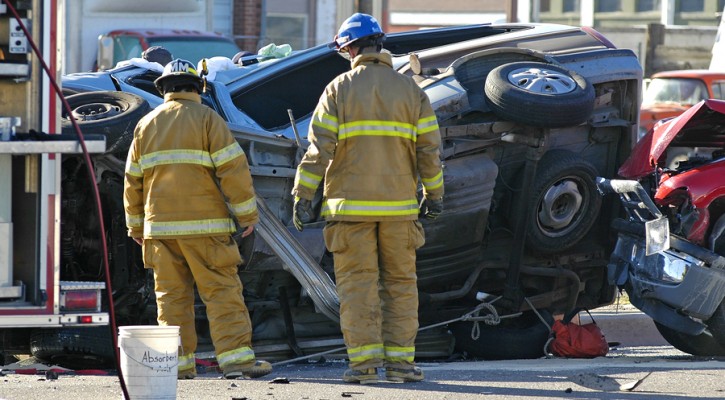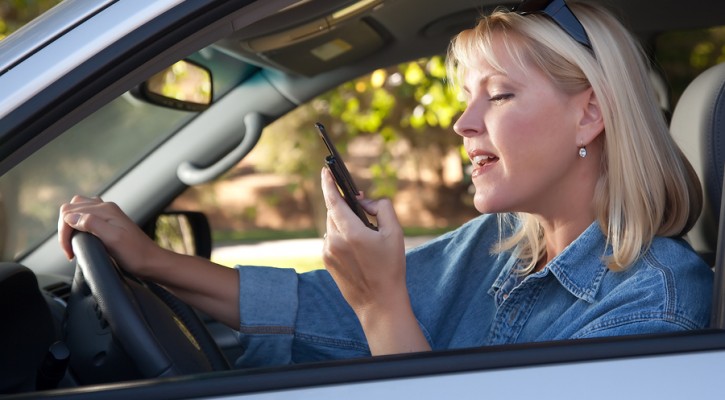Tag Archive: Distracted Driving

Pokémon Hunting Presents Real Dangers
July 11, 2016
After its release less than a week ago, the new Pokémon Go app for smart phones has rapidly gone viral and is taking the world by storm. Just like with any big storm, we can expect a lot of injuries and, unfortunately, some deaths.
If you’ve been wasting your time over the last five days paying attention to the elections in the US and Great Britain or other world events, you may not know what all this Pokémon hoopla is all about. Pokémon Go is a smartphone app that allows its users to hunt for and capture Pokémon cartoon characters in a real world environment. The free app uses the phone’s camera feature to blend the Pokémon world with the real world around you. The best way to understand it is to imagine a virtual scavenger hunt.
Those who complain that their kids are spending too much time indoors playing video games might appreciate the fact that, in order to play this game, the player has to go outside and wander the neighborhood to find Pokémon. The aim is to catch as many Pokémon as possible to earn points and get promoted to different levels. Users can also join teams and work with other team members to accumulate points.
According to news reports and social media, the game is quickly becoming addictive and, during the first 24 hours after its release, it was downloaded more than the dating app Tinder. According to SimilarWeb, the number of daily users has already equaled that of Twitter.
The problem with this game is that, in order to find and capture Pokémon, the user will have to pay attention to the screen at all times. Once a Pokémon is found, the user has to aim and fire the capture device with enough velocity to capture the creature.
This means that a lot of people are going to be wandering around with their eyes focused on their smartphone rather than the path ahead. Drivers are going to have to be even more alert for distracted pedestrians stepping into the roadway. Team members who are afraid of falling behind may be tempted to continue playing the game even when they’re behind the wheel. To play the game effectively, the player will have to pay more attention to the screen than to the road ahead.
The Pokémon Go website carries the following warnings:
- “For safety’s sake, never play Pokémon Go when you’re on your bike, driving a car, riding a hoverboard, or anything else where you should be paying attention, and of course never wander away from your parents or your group to catch a Pokémon.”
- “If you see a Pokémon someplace where it might not be safe to capture it (like in a construction site or on private property that you can’t get to from the street), don’t do it. There will always be another chance to catch that Pokémon later on!”
In Missouri, a team of armed robbers waited for victims at a remote Pokémon spot. Already, accounts of cuts, bruises, and twisted ankles are showing up online. It’s just a matter of time before the first player is hospitalized or killed.

Some Teen Safe Driving Choices Are Still Dangerous
December 17, 2015
Researchers at the Children’s Hospital of Philadelphia recently conducted a study to gauge teen attitudes on safe driving choices regarding cell phones. The researchers saw some encouraging signs but say there’s still a long way to go before cell phone use by teens while driving is a thing of the past.
To conduct their research, the researchers conducted several focus groups with 16 to 18 year old drivers. The questions asked of the teen drivers were designed to get an overall view of teen perceptions regarding cell phone use while driving with the intent of gathering information to help develop future interventions to reduce risky driving choices by teens.
According to the head researcher, Catherine McDonald, PhD, RN, it was encouraging to see that teens recognized that cell phone use, texting, and use of social media are dangerous behind-the-wheel. When asked what methods teens used to prevent the use of cell phones while driving, some teens listed methods such as turning off the cell phone or pulling off the road before making or answering a call. However, some teens listed choices such as waiting for a red light or until they were on familiar roads before diverting their attention to the cell phone.
While it’s good that they are considering ways to reduce their cell phone use, those choices such as waiting for red lights or familiar roads are still dangerous choices that take their eyes and mental attention off the road.
- Choosing to use hands-free communication devices has been shown to be no safer than the use of hand-held devices.
- A driver’s attention at red lights is important too. Not noticing that the light has turned green can hold up traffic behind and lead angry drivers to try to retaliate.
- Research shows that hands-free devices are still distracting for up to 27 seconds after hanging up.
- Waiting for familiar roads is a bad choice because most traffic collisions happen within 25 miles of home and at speeds below 45 mph. Drivers become complacent on those familiar roads and that leads to even more distractions.
According to the researchers, until more effective methods are developed to pry teens away from their cell phones while driving, parents are still the primary influence in promoting safer choices by teens. Setting a good example and insisting on strict rules for cell phone use while driving, parents can help keep their teens safe on the road.

Prom Night: One Item Parents Should Splurge On
April 7, 2015
Prom night is just around the corner an proms can get pretty expensive for parents; from expensive dresses, tux rentals, flowers, and photos, it can all add up. However, there’s one item parents should really consider splurging on to keep their kids safe on prom night; a limo.
Prom night can be one of the most dangerous nights of the year. In spite of all the warnings that parents give, once the kids are out of sight, there’s really no way to predict what they may do or prevent them from participating in some of the more dangerous activities on prom night such as drinking or using drugs. At that age, peer pressure can be much more powerful than parental rules and warnings.
Prom night isn’t a night when you want to trust the driving to a teen. A recent study showed that sixty percent of teen crashes are caused by driver distraction. It’s not just texting and cell phones that cause the distractions. In fact, the biggest distraction for teen drivers is interacting with their teen passengers. Even if the kids remain sober, the excitement, novelty and the gathering of friends can be very distracting to a young driver. Driving late at night, after a long day of planning and the activities at the prom itself, can lead to drowsy driving. Also, even if the kids are sober, there are more drunks on the road on those late weekend nights and those drunk drivers combined with distracted teen drivers can lead to tragedy.
Parents should consider hiring or at least contributing to the hiring of a limo. If the parents do the hiring, then the limo driver works for them and the parent can set down certain rules for where the kids can go and at what time they should return. To save embarrassing the teen, the parents can arrange to check in with the limo driver for updates. The teens can feel glamorous and be as loud, raucous and distracting as they want while riding safely in the back, while the limo driver, sealed off in the front, concentrates on the road ahead. It’s a win-win situation for all.

Traffic Deaths Spike During Spring Break
March 20, 2015
Traffic deaths spike during spring break according to a study released recently by the journal Economic Inquiry. The researchers looked at different spring break hot spots and and found the the number of traffic fatalities in those localities were significantly higher compared to other localities in the same states at the same time of year.
The researchers from Department of Sociology in the University of Miami (UM) College of Arts and Sciences, studied fatal traffic crashes from the last week of February to the first week of April in 14 spring break hot spots across seven states: Arizona, California, Florida, Nevada, South Carolina, Texas, and Virginia.
Key findings include:
- The weekly death toll resulting from car crashes in the 14 spring break counties was 9.1 percent higher during the spring break season compared to other weeks of the year.
- This translates into 16 more traffic deaths per year in all 14 counties examined.
- There was a significantly higher incidence of traffic fatalities that involved out-of-state drivers than in-state drivers.
- Fatalities involving drivers younger than 25 years old were far more common than fatalities involving older drivers.
- During the spring break season, there was no significant increase in traffic fatalities in non-spring break counties located in the same states as the spring break counties—supporting a true spring break effect.
One of the most interesting findings was the fact that “There were no statistically significant differences between traffic fatalities involving drivers with alcohol impairment compared to those with no alcohol impairment.” While alcohol certainly has an impact, this finding shows that other factors such as driver distraction are equally as dangerous.
During spring break, there are so many things that can distract a driver including:
- Large crowds of pedestrians on the road.
- Festivals, rock concerts, and promotional events in view of the roadway.
- A car full of excited young people in search of a good time.
- Hot bikinis and six pack abs along the roadways.
- Driver fatigue.
A driver needs to not only be aware of and try to ignore the distractions but also be on the lookout for other distracted or drunk drivers.
If you feel that you may be missing out on the views while concentrating on the road, take turns swapping driving duties with a friend in order to become a spectator.
Don’t become a statistic during spring break. Make sure that your spring break provides a lifetime of fond memories and not a lifetime of pain and regret.
Read more: Traffic fatalities spike during spring break

Parents Text More Than Teens
October 16, 2014
Parents text more than teen drivers according to a newly released study sponsored by Straight Talk’s Safe Driver Initiative. The results of a poll of 1,000 licensed teens conducted by KRC Research revealed, among other things, that thirty-three percent of parents text as compared to twenty-four percent of teens.
Among their other findings
- Almost one-third of respondents admitted that they nearly were in a crash as a result of texting while driving in the past year.
- Forty-two percent of respondents said they were more likely to admit to pointing out others texting while driving than were likely to admit doing it themselves.
- For parents, texting and driving is the third most significant worry behind academic achievement and alcohol and drug use; and 88 percent of parents have had a frank discussion with their teens about texting and driving.
- More teens have had a frank discussion around texting and driving with their parents (74 percent) than have had discussions about teenage drinking (73 percent), drug use (71 percent), or sexual health (61 percent).
We wrote about the “Do as I say, not as I do!” phenomenon as far back as 2007. Teens look to their parents as their biggest influence and, when learning to drive, if they see their parents act in a way that, at the time, seems to have no negative consequences, the teen is more likely to follow that example.
Research has shown that more than eighty percent of crashes involved driver distraction within two or three seconds of the crash. If they want their teens to drive safely, parents need to put down the phone and be the role model for safe driving.
To learn more about the study, visit: Do As I Say, Not As I Do When It Comes To Texting And Driving
